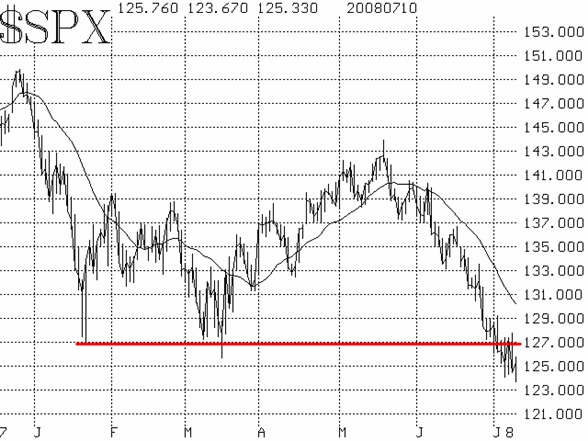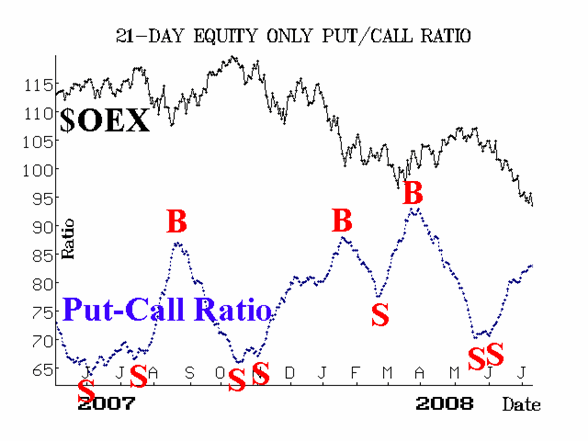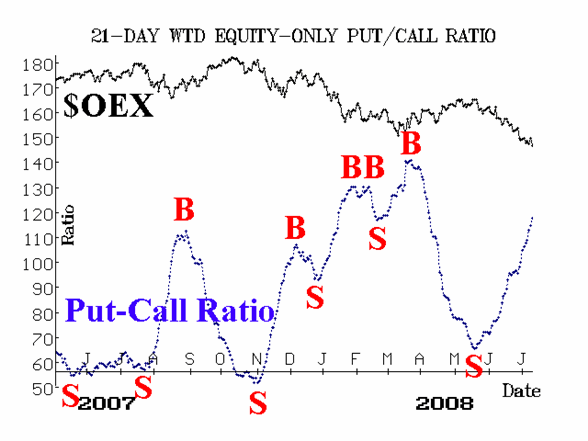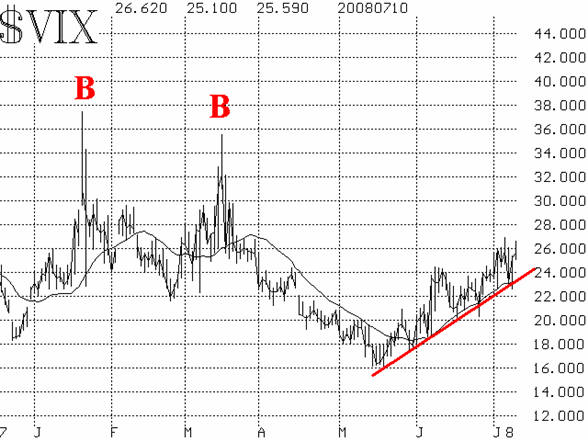| The McMillan Options Strategist Weekly |
| By Lawrence G. McMillan |
Published
07/11/2008
|
Options
|
Unrated
|
|
|
|
The McMillan Options Strategist Weekly
One of the nastiest bear markets in memory continues to grind its way lower. Even though the market -- by many measures -- has been very oversold for some time, it keeps going lower. That is typical of bear markets at their strongest. Rallies have been short-lived, followed quickly by more selling.
Significant support at 1270 was violated, and new closing and intraday lows have been made this week on $SPX. That area represents the first level of resistance, while 1235 is support as it has been tested three times in the last two days and has held. Any move outside of thet range 1235-1280 would likely be significant. The $SPX chart remains a very negative one. The 20-day moving average is declining although it's well above current prices at about 1305 or so.

The equity-only put-call ratios remain on sell signals. The standard ratio (Figure 1) is particularly sluggish -- a feature which indicates that traders haven't bought the massive number of puts that they usually do at a market bottom. Neither ratio has reached extreme oversold levels (heights) yet, so there appears to be more selling to come before these roll over and give new buy signals.

Market breadth is extremely oversold and thus is the main harbinger of an oversold rally. Many traders thought Tuesday's strong rally was the beginning of such an oversold rally, but it didn't even last one full day before new lows were made. What spurs these oversold rallies is short-covering, and the bulls count on that short-covering to fuel rally attempts. So far the shorts have been reluctant to do much covering. As a guide, though, if $SPX trades above 1280, the short-term rally thesis should probably be given the benefit of the doubt.

Volatility indices ($VIX and $VXO) continue to rise, and so they remain in bearish uptrends. However, they haven't formed the spike peaks that have generally accompanied market bottoms in the past. Is a spike peak in $VIX mandatory for a bottom? No, nothing is ever mandatory -- one must "listen" to the market. But without a capitulation panic, we would expect that any rallies would not be very long-lasting.

In summary, we remain negative, but mindful of the fact that oversold rallies could spring up. Breadth is potentially oversold enough to denote a major bottom, but none of the other indicators are. However, rallies have been meek, so bears should retain positions as long as $SPX remains below 1280.
Lawrence G. McMillan is the author of two best selling books on options, including Options as a Strategic Investment, recognized as essential resources for any serious option trader's library.
|